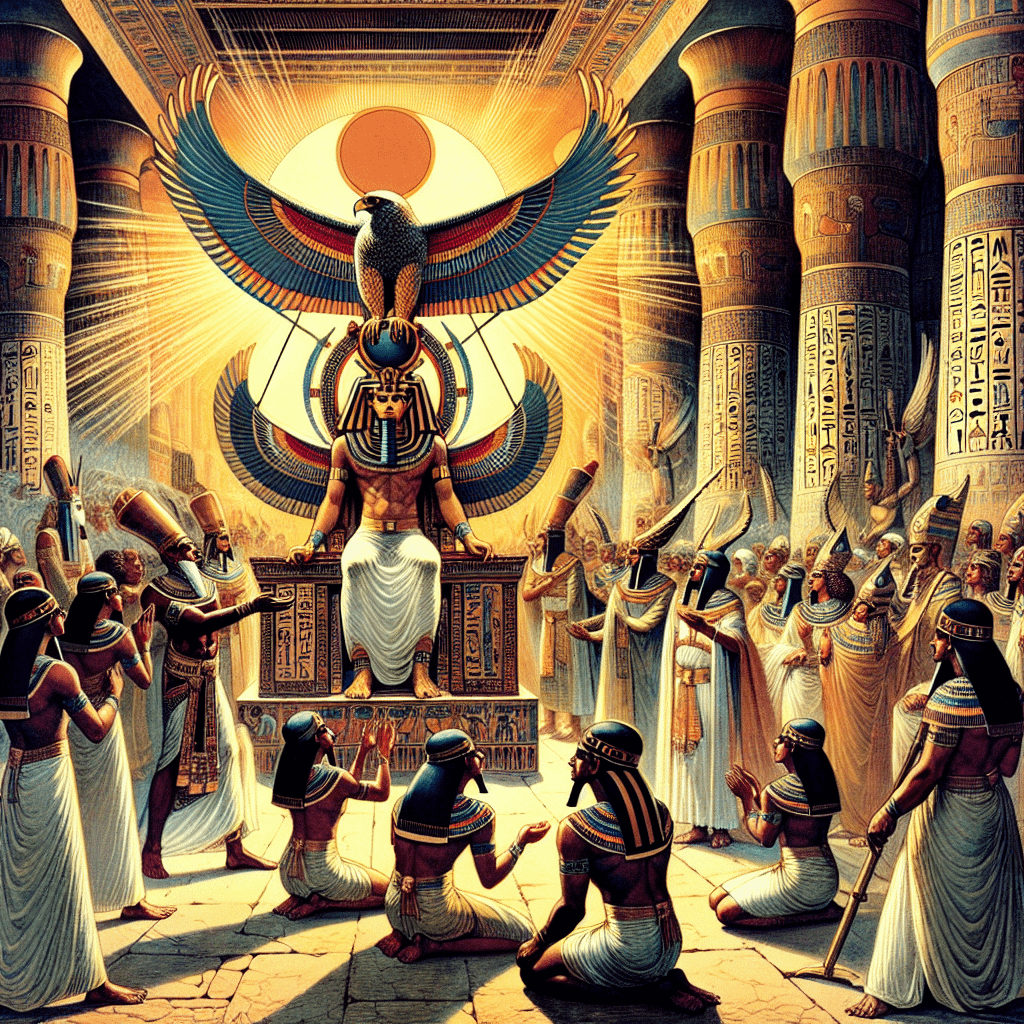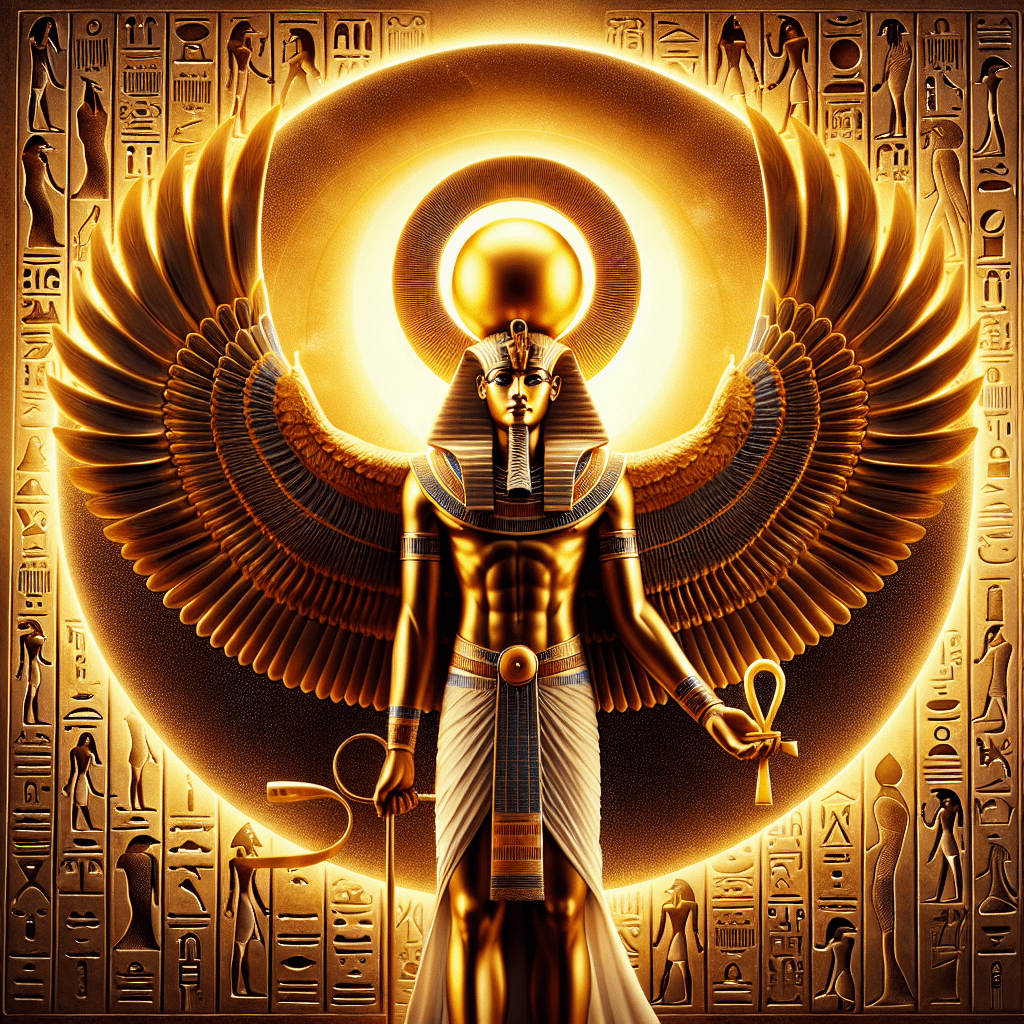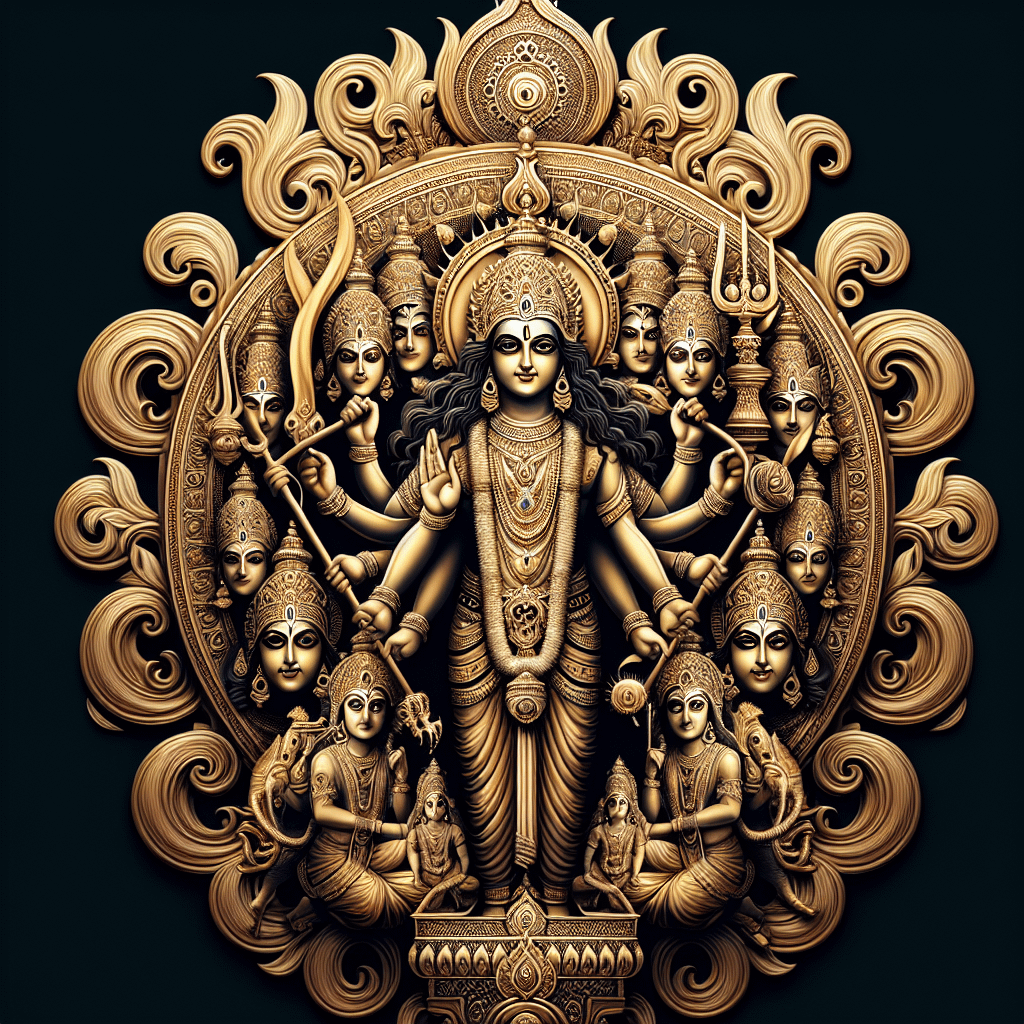As an Amazon Associate I earn from qualifying purchases.

In ancient Egypt, the sun was more than just a life-giving star in the sky – it was the embodiment of Ra, the Sun God, central to the culture and religion of a civilization that thrived for millennia. Worshipped as the ruler of both the earth and the sky, Ra was revered as the god of the sun, radiance, and warmth, the one who sailed across the heavens in a boat, bringing light to the world and maintaining the cycle of life, death, and rebirth.
The devotion to Ra involved elaborate rituals and the construction of magnificent temples designed to harness the symbolic and actual power of the sun's rays. The most famous of these, the Great Temple of Ra at Heliopolis, was once a center of learning and religious activity, where the pharaohs were believed to become one with Ra after their death. Solar energy was not only worshipped for its ability to sustain life on Earth but also as a mystical force, central to the creation and the afterlife. This veneration of solar energy has transcended generations, evolving into a symbol of enlightenment and rebirth that is still culturally significant today.
A striking element of Ra devotional practices was the alignment of temples and monuments with the solar cycle, designed to capture the sun at significant moments. For example, on the solstices, sunlight would perfectly align with strategically placed doorways or windows within these sacred spaces, flooding the inner sanctum with light. This architectural mastery highlights the deep understanding ancient Egyptians had of astronomy and their desire to live in harmony with the celestial cycles.
Today, the fascination with sun energy continues, albeit in a more practical manifestation. Solar power, harnessed through modern photovoltaic technology, now serves as a renewable energy source, effectively reducing our dependency on fossil fuels. In 2018, the global solar energy market was estimated to be worth around $52.5 billion, with projections suggesting it could grow to $223.3 billion by 2026. This growing industry is a testament to the enduring legacy of solar worship, as humanity continues to draw inspiration and energy from the same star the ancient Egyptians held in such reverence.
“`html
How Can Practicing Ra Devotion Enhance Your Life Through Sun Energy?
“`
In ancient Egyptian mythology, Ra is the god of the sun, embodying the power of sunlight that sustains all life on Earth. Devotion to Ra involves recognizing and harnessing this potent solar energy to improve physical health, enhance mental clarity, and promote spiritual growth. Through practices such as sun gazing, meditating during sunrise or sunset, and incorporating sun symbolism into daily rituals, devotees can tap into the vitality and life force symbolized by Ra. Embracing the sun's energy can lead to a greater sense of balance and harmony with the natural world. In the following sections, we delve deeper into the history of Ra devotion, its benefits, and how to safely and effectively integrate Sun Energy practices into modern life.
Ra Devotional for Sun Energy
Ra, the ancient Egyptian god of the sun, represents one of the most fundamental aspects of life: the solar energy that warms Earth, drives the weather, governs the day, and sustains all living things. The concept of Ra Devotional is rooted in the veneration of this powerful deity and seeks to connect individuals with the vitality and spiritual significance of the sun.
In the modern context, Ra Devotional for sun energy often involves a combination of meditation, prayer, and ritual that focuses on the sunlight as a source of power and enlightenment. Devotees may rise at dawn to greet the sun, practicing sun salutations or other forms of physical exercise like yoga or tai chi, which are believed to absorb the sun's energy and vitality.
The rituals may also include the creation of altars dedicated to Ra, featuring symbols associated with the sun, such as solar disks, falcons, and the color gold. Offerings such as water, incense, or yellow and orange flowers, which represent the sun's rays, are common. Practitioners might recite hymns or mantras praising the sun's life-giving force, seeking to invoke Ra's blessings for health, prosperity, and guidance.
Chanting is another powerful element of Ra Devotional. The “Hymn to the Sun” is an example of an ancient chant that might be used by modern followers as a means to honor the solar deity. This chant or others like it are sung to express gratitude for the sunlight, as well as to connect on a deeper spiritual level with the cosmos.
Another aspect of Ra Devotional involves mindfulness and reflection upon the sun's cycle and its profound impact on Earth. This encompasses recognizing the solstices and equinoxes, days which have historically been of great significance in many cultures. Celebrations on these days are not just commemorative but also engage participants in a deeper understanding of the sun's role in the cycles of nature.
Some practitioners integrate their Ra Devotional practices with sustainable living and environmentalism. They recognize solar energy as not only spiritually significant but also as a key to combatting the modern challenges of climate change and resource depletion. Solar power, as a clean and renewable energy source, is increasingly viewed as a manifestation of the blessings of Ra in practical terms.
With the rise of interest in alternative spirituality and earth-centered religious practices, communities around the internet and in various parts of the world have formed to share knowledge, experiences, and celebrate rituals of Ra Devotional. The community might organize group meditations during solar eclipses, equinoxes, and solstices, enhancing the sense of connectedness between the participants, the deity, and the natural world.
In terms of statistical relevance, data from the International Renewable Energy Agency (IRENA) showed that solar energy capacity has been expanding rapidly worldwide. For instance, the global solar photovoltaic (PV) capacity increased from about 227 gigawatts in 2015 to more than 714 gigawatts by the end of 2020, demonstrating not only a growing reliance on the sun's power for our physical needs but also hinting at a larger, possibly spiritual, acknowledgment of the sun's centrality to life on Earth.
- What is a Ra devotional, and what does it involve?
A Ra devotional is a spiritual or religious practice that honors the ancient Egyptian sun god Ra. It often involves rituals, prayers, meditation, or offerings aimed at seeking the life-giving energy and blessings associated with the sun and its deity representation. The specific activities can vary based on personal beliefs and traditions but generally focus on connecting with the positive attributes of sunlight and the power of Ra as a source of vitality and creation.
- Can anyone participate in a Ra devotional, or is it restricted to those of a certain faith?
While a Ra devotional is rooted in ancient Egyptian spirituality, it is not limited to people of a specific faith. Individuals from diverse backgrounds who feel drawn to solar energy or Egyptian mythology may participate in such practices. Respect and genuine interest in the cultural origins are important when engaging in devotional activities.
- What are common offerings made during Ra devotional practices?
Common offerings in Ra devotional practices may include water, bread, beer, and incense, which were traditional ancient Egyptian offerings. Additionally, contemporary practitioners might offer sunlight-related items like crystals, flowers, or even written prayers and intentions that align with seeking the blessing of the sun god Ra.
- How often should one perform Ra devotional practices?
The frequency of Ra devotional practices is a personal choice. Some may choose to perform daily rituals, especially at sunrise, to honor the emergence of the sun. Others may opt for weekly or monthly practices or during specific solar events like solstices and equinoxes. Consistency and personal commitment are key to deepening the connection with the deity.
- Is there a particular time of day that is best for conducting a Ra devotional?
The most appropriate time for conducting a Ra devotional is at sunrise since this is when Ra was believed to be reborn each day. However, any time of day when the sun's energy is felt can be suitable for devotional activities. Some may choose to connect with the setting sun or during the midday when the sun is at its zenith.
- Do I need any special tools or items to perform a Ra devotional?
Special tools or items are not a requirement for performing a Ra devotional, as the core component is one's intention and focus on the sun's energy. However, individuals may choose to enhance their practice with symbols of Ra, candles, offerings, or other ritualistic items that hold personal or traditional significance.
- How can I incorporate Ra devotional practices into my daily life?
To incorporate Ra devotional practices into daily life, you can start with simple acts of gratitude towards the sun each morning, take a moment to absorb its warmth, or meditate on its life-sustaining energies. For those who want a more structured approach, setting aside time for specific rituals or reading hymns and prayers dedicated to Ra can be integrated into the daily routine.
- What is the significance of the sun in Ra devotionals?
In Ra devotionals, the sun is the paramount symbol of life, growth, and renewal as it is the celestial body that Ra represents. The sun's significance is derived from its role in sustaining all life on Earth, representing qualities such as light over darkness, warmth, and the creation that mirror the ancient Egyptian understanding of Ra.
- Can Ra devotionals be performed indoors, or do they have to be outside in the sunlight?
Ra devotionals can indeed be performed indoors if being outside is not feasible. In such cases, practitioners might use a representation of the sun, focus on sunlight coming through a window, or visualize the sun's energy in meditation. The intention is more critical than the location, although being outdoors may enhance the connection with the sun's energy.
- Is it necessary to know ancient Egyptian language or rituals to perform a Ra devotional?
While knowing ancient Egyptian language or rituals can add depth to the practice, it is not necessary to perform a Ra devotional. Contemporary practitioners can use translations of ancient texts or create their prayers and rituals that resonate with their personal connection to Ra and the sun.

Conclusion
In the essence of our Ra devotional, we have explored the profound connection between the worship of the sun deity Ra, a figure of immense spiritual significance in ancient Egyptian mythology, and the harnessing of sun energy for personal empowerment. Through rituals, meditations, and the embodiment of Ra’s qualities, devotees can tap into the inexhaustible vitality of the sun, cultivating inner strength, clarity, and a greater understanding of their own divine nature. The practices outlined provide a pathway to align with the solar cycle, thereby synchronizing one's life with the rhythms of nature and the cosmos, enhancing both spiritual growth and physical well-being.
Moreover, the Ra devotional offers insights into the transformative power of sunlight as a source of spiritual nourishment, capable of revitalizing the mind, body, and soul. By integrating this ancient wisdom with modern life, individuals find a reservoir of joy, creativity, and resilience, akin to the life-giving force of the sun itself. Embracing sun energy through guided visualization, sun gazing, or solar-charged affirmations, enables a deeper connection with the universal life force, encouraging a balanced and harmonious existence. In summary, the Ra devotional is a testament to the enduring legacy of ancient spiritual practices and their relevance in fostering a luminous, energized, and enlightened life in tune with the supreme solar power.
Amazon and the Amazon logo are trademarks of Amazon.com, Inc, or its affiliates.


